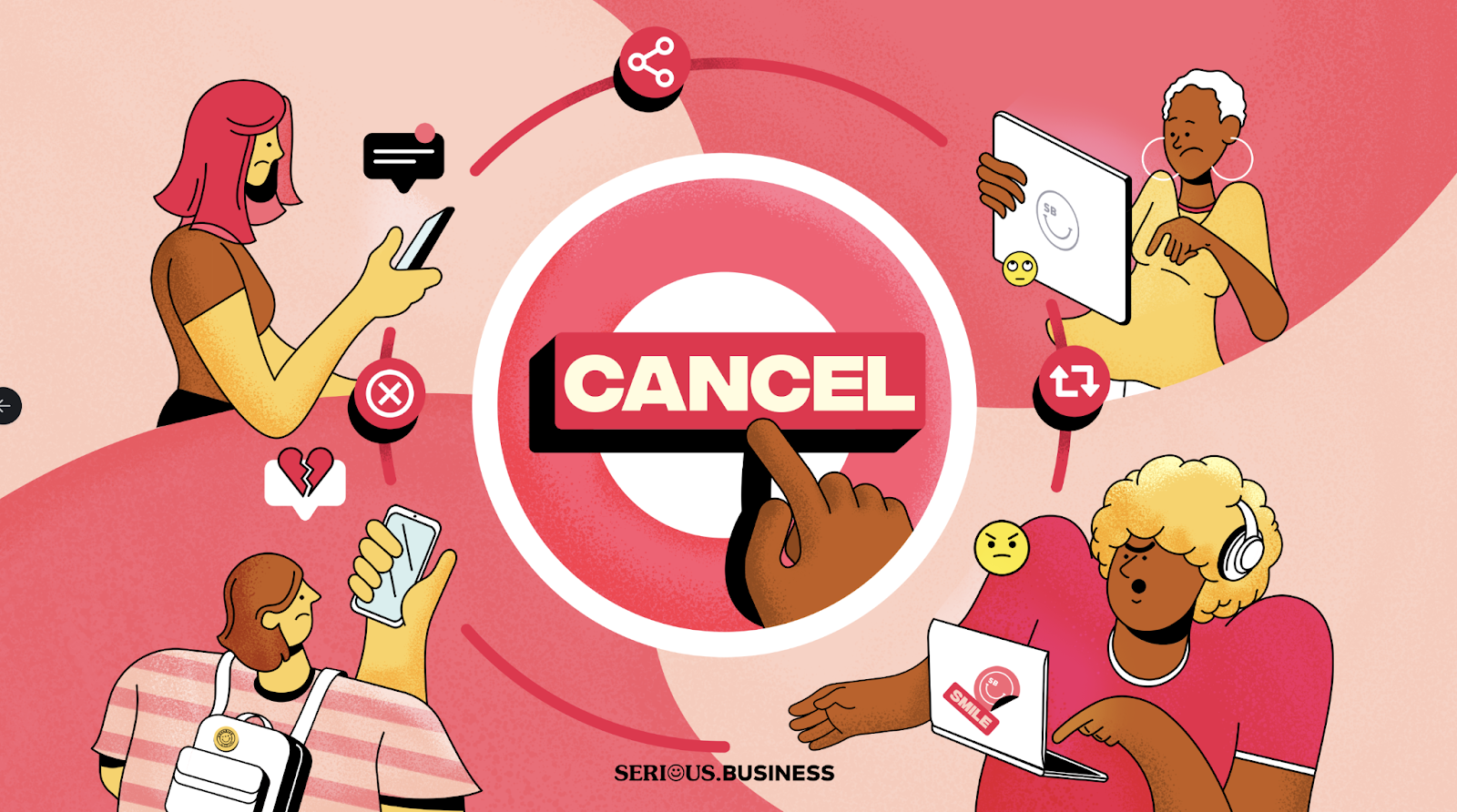

By Alex Hernandez-Zavala
Cancel culture has plagued many people, especially celebrities and big businesses. Whatever your stance on cancel culture may be, cancel culture is an influential force.
However, influential or not, cancel culture is an asinine side effect of digital culture’s attempt on “inclusiveness.” Cancel culture does more harm than good, as the methods in which people get canceled are not constructive, and the snowball effects foster an environment of hate which leads nowhere.
First, it’s essential to understand the purpose of cancel culture. A sociological approach to defining cancel culture is a movement in which multiple people attempt to ridicule something in the hope of social change.
An article by Bandt reports the recent outrage brought about by Kendall Jenner and her appearance in an 818 tequila advertisement. People were outraged because she wore Mexican farmworker clothes while riding on horseback. Naturally, people took to Twitter expressing their outrage.
According to the article, people found that “Her brand tequila818 was criticised for appropriating a Mexican product.” Don’t get my point twisted; I am not defending Jenner’s choice of apparel, nor am I defending the Kardashian family, far from it. However, I don’t think threatening and belittling Kendall Jenner is constructive or deserved.
A constructive way of handling this situation would be to sincerely express one’s feelings about their disagreement without any hasty accusations or hateful rhetoric. Threatening Jenner does not achieve anything.
The University of Central Florida has also questioned the unconstructive nature of cancel culture. According to Amanda Koontz, “It puts great responsibility on an individual, and it does not [always] encourage actual societal change. We haven’t taken care of the larger institutional or systemic issues.”
Instead of people coming together and advocating for meaningful change, cancel culture advocates for the individual to single-handedly foster “social change” through meaningless bullying and harassment.
Cancel culture is not worth following.
Though, recently, people have started fighting back against cancel culture. Surprisingly enough, the tip of the spear being Chris Rock. In an article by TheSource, Chris Rock claims that cancel culture leads to bland entertainment, “Things get boring. I see a lot of unfunny comedians, unfunny TV shows, unfunny movies because people are scared to make a move and that’s not a good place to be.”
Though I don’t entirely agree with Chris Rock’s view of the tediousness of the industry due to cancel culture, I think he’s headed in the right direction. If more celebrities point out the flaws of cancel culture, then cancel culture can morph into a constructive form that evokes social change.
However, cancel culture can have its good moments. A 26-foot tall statue of Marilyn Monroe has been scrutinized by cancel culture, according to WBAP. This is an instance where the removal of this statue is necessary. Due to the objectifying nature Marilyn Monroe represents, a 26-foot tall statue with her skirt blowing upward may be insensitive for modern-day audiences.
Cancel culture is effectively utilized here––especially because no one individual person is extensively bombarded with hate and threats.
Nevertheless, to reiterate further, cancel culture of contemporary times doesn’t foster an environment for social change. Instead, it creates a hateful environment that allows people to hop on a bandwagon without information. Though cancel culture can be a legitimate tool for social change, as with the Marilyn Monroe incident, more often than not, it’s used to spread polarized division instead of promoting compromise. It’s shameful to see cancel culture be perpetually violent as it has the potential to positively impact social change cohesively.

Alex Hernandez-Zavala is a first-year student at UC Davis, double majoring in Psychology and Sociology. He was born in the Central Valley and raised in Salinas, California.
Support our work – to become a sustaining at $5 – $10- $25 per month hit the link:






Good article and fairly written. I agree with most of it until I got to the removal of the Marilyn Monroe statue paragraph. The famous ‘Seven Year Itch’ photograph which led to statues shouldn’t have been removed because of someone’s insensitivities. I mean seriously, someone is offended because her statue underwear shows?
“Cancel culture” is an overused term that has entirely lost its meaning. It is used (particularly by those on the right) as a response to criticism or calls for accountability. It’s a way of attempting to stifle free speech.
If one is going to address cancel culture, it’s important to define what one means by the term.
Would you say that “cancel culture” is being used against the S.F. school board member who previously said that Asians are using “white supremacist thinking” to get ahead, among other things?
Including the resulting actions by the board, which subsequently resulted in a lawsuit against the board and its members?
It’s not the right who’s behind most of today’s cancel culture.
Overuse/misuse of the term in response to criticism or calls for accountability certainly is.
If their conduct is against known professional code of conduct, firing them should not be called cancel culture. If there is no known code of conduct, the entity that has the power to fire should first declare its code of conduct.
This mechanism of using cancel culture (regardless whether it is effective) is based on punishment.
An alternative mechanism is to hire based on an honorable record. (Instead of pressuring other circles and businesses to change, you advertise that your circle and business only hire honorable people. You don’t care how bad things are in other circles, you focus on keeping your own circle honorable.)
Also, how about the guy who operated the local sandwich shop franchise, who lost his business as a result of a confrontation with his own employees regarding political symbols at work (as I recall), and his related comments in regard to his views of BLM?
Do you think that the corporate entity handled that appropriately, and as a result – the former operator has been held “accountable”?
Oh, and what about Colin Kaepernick, and the NFL? Of course, it’s difficult to know exactly what’s occurred with that. In any case, do you believe that Colin Kaepernick has been held “accountable”?
I’d suggest that they not watch any of her movies, then. 🙂 Despite being in some pretty good ones.
For example, “Some Like it Hot” (which seems quite “modern” in its sensibilities – with perhaps the best final line in movie history), the Misfits, etc.
Of course, we could discuss the entire entertainment industry regarding this general issue.
You lost me there. You had a really good narrative going there, and then the Titanic took a left straight into the iceberg. There’s no connect-the-dots there. I know why a lot of “CC” stuff happens, and I don’t necessarily disagree with the reasons, I disagree with the tactics. Somehow you feel ‘objectification’ of a 50’s movie star is more important than racism and confederate statues, and worthy or cancelling/removal? Where is the logic there?
Seems “CC” going so far as to be offended by white undies, it has taken on a hyper-puritanical nature.
If the issue is objectifying women in movies, what about a zillion other movies made since then that are severely objectifying/insulting to women, or what about porn, which is pure objectification (yet oddly semi-acceptable by many in the same age group that spawns cancel culture – or justified as ‘female empowerment’ – yeah right). But don’t show yer undies, long dead Marilyn!
Yes, the statues and photos of Marilyn Monroe in that scene are iconic. I saw the same statue in Paris at the Moulin Rouge about 12 years ago. Classic.
After years of searching I was finally able to secure a complete copy of the ancient Amos n Andy radio comedy series. It was a show about a community of black folks having a good time in each others’ company. Some of them appeared to be ignorant and others would try to eddicate them, but their facts were usually wrong too. It probably appeared racist to newer generations. And yet, if they were all white actors, they would have done the same things, pretending to be dumb. I loved those folks. Now it is practically illegal to have the collection. They did some television too, I think, all hidden from your eyes now.
I would give anything to get a copy of their old television shows I’d even give up my wife 😁
So grab somadat Dr. Seuss now before it’s gone forever. Maybe it’s offensive to some, maybe not- who are we to decide?